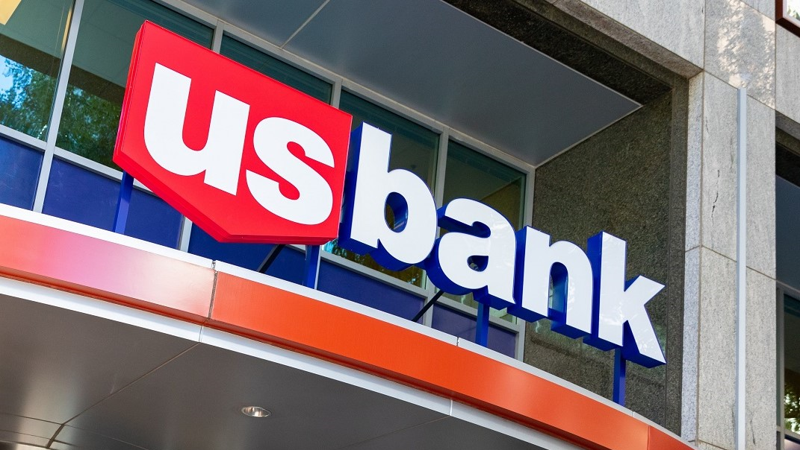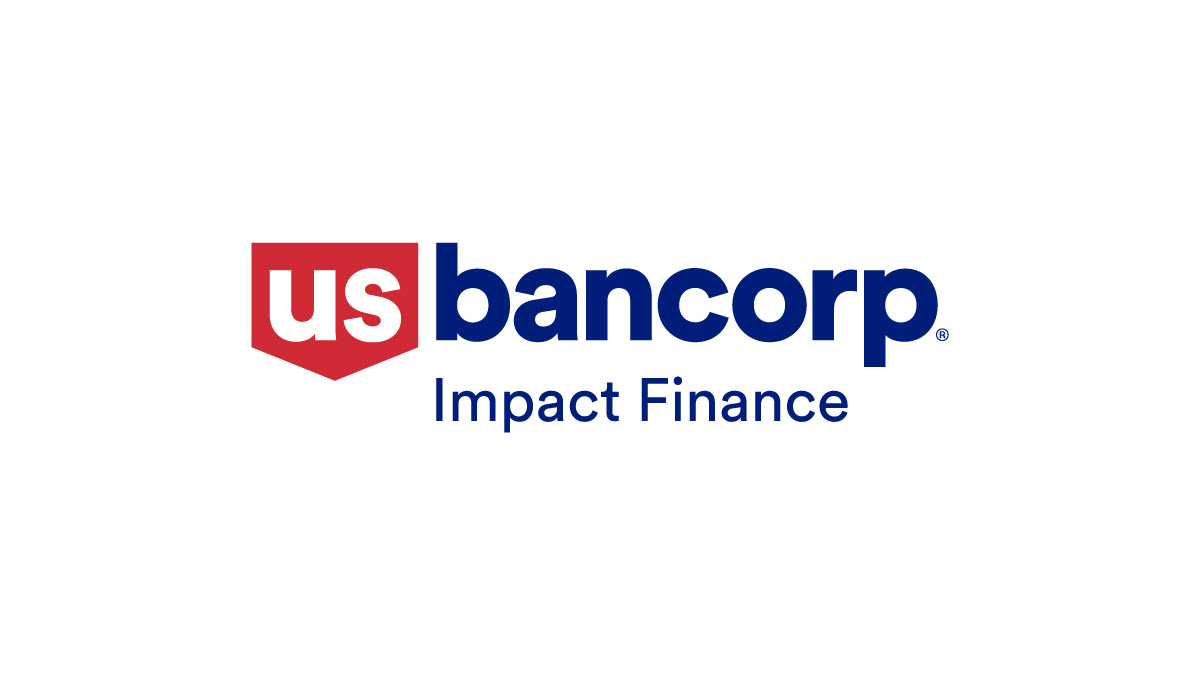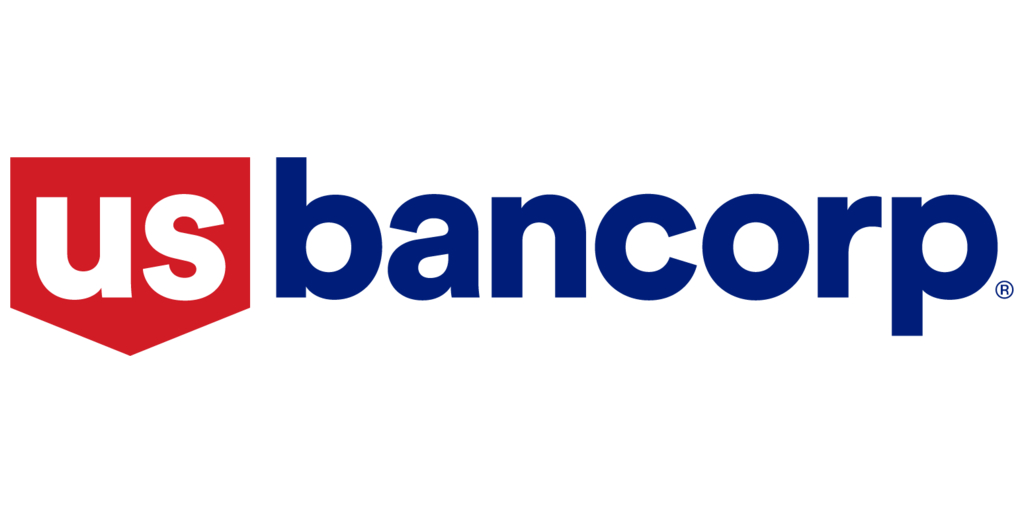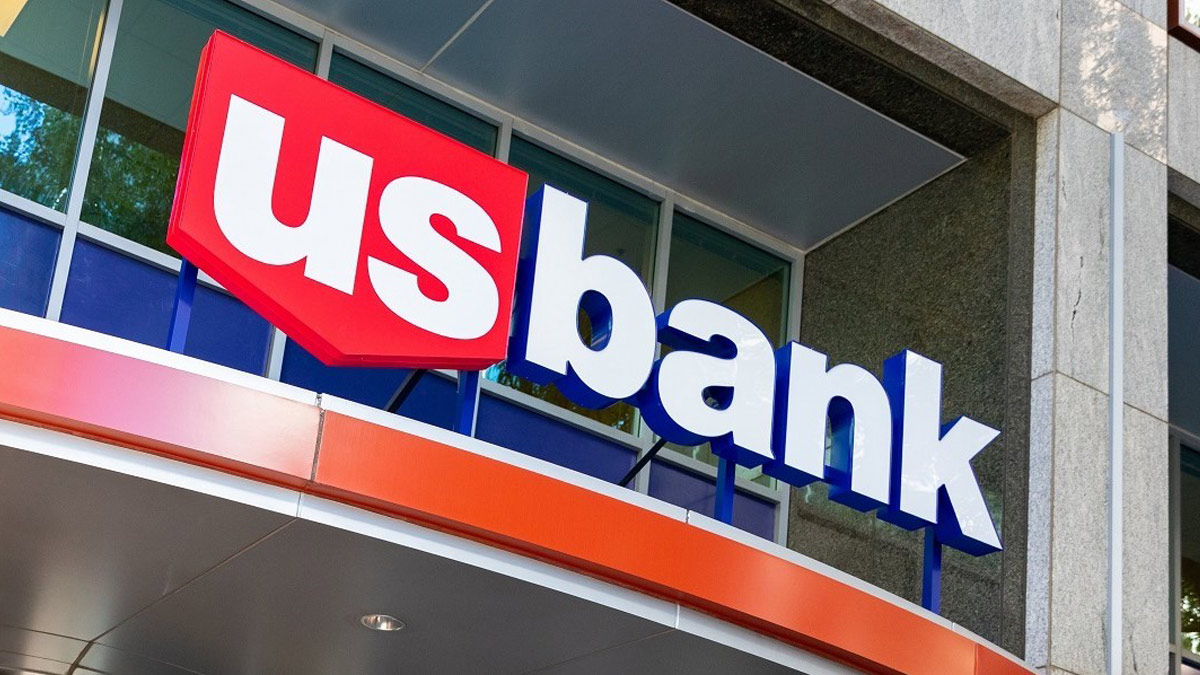U.S. Bancorp's Financial Health Ahead of Fourth-Quarter Earnings

- Analysts predict an earnings per share (EPS) of $1.04 and revenue of approximately $6.98 billion for U.S. Bancorp's fourth-quarter.
- Key financial ratios such as the price-to-earnings (P/E) ratio of 13.85 and a debt-to-equity ratio of 1.33 are under scrutiny to assess U.S. Bancorp's operational efficiency and financial health.
- Liquidity concerns are highlighted with a current ratio of 0.67, indicating potential challenges in covering short-term liabilities.
U.S. Bancorp, listed on the NYSE:USB, is a prominent financial services company in the United States. It offers a wide range of banking services, including retail, commercial, and investment banking. As it prepares to release its fourth-quarter earnings on January 16, 2025, analysts are keenly observing the company's financial metrics to assess its performance.
Wall Street analysts project U.S. Bancorp's earnings per share (EPS) to be $1.04, with revenue expected to reach approximately $6.98 billion. U.S. Bancorp's financial ratios provide insights into its current standing. The company has a price-to-earnings (P/E) ratio of 13.85, which is a measure of its current share price relative to its per-share earnings. Its price-to-sales ratio is 2.24, indicating how much investors are willing to pay per dollar of sales. The enterprise value to sales ratio is 2.39, reflecting the company's total value compared to its sales.
The company's enterprise value to operating cash flow ratio is notably high at 51.14, suggesting that its market value is significantly higher than the cash flow it generates from operations. This could indicate potential overvaluation. Additionally, U.S. Bancorp's debt-to-equity ratio of 1.33 shows it has more debt than equity, which could be a concern for investors.
Liquidity is another area of focus, with U.S. Bancorp's current ratio at 0.67. This ratio measures the company's ability to cover its short-term liabilities with its short-term assets. A ratio below 1 indicates potential liquidity challenges, which stakeholders will be watching closely in the upcoming earnings report.
| Symbol | Price | %chg |
|---|---|---|
| BBCA.JK | 8625 | 1.16 |
| BBRI.JK | 4040 | 1.49 |
| BMRI.JK | 4740 | 0.42 |
| BNLI.JK | 5275 | 0 |

U.S. Bancorp (NYSE: USB) Maintains Strong Financial Performance with Positive Earnings Surprise
- U.S. Bancorp's adjusted earnings per share of $1.22 exceeded analyst expectations.
- The company reported quarterly sales of $7.3 billion, surpassing forecasts.
- Net income saw a 16.7% increase year-over-year, with projections of continued growth.
U.S. Bancorp (NYSE: USB) is a leading financial services company in the United States, offering a comprehensive suite of banking, investment, mortgage, and payment services. As of October 20, 2025, Cowen & Co. maintained its "Buy" rating for USB, with the stock priced at $46.33. TD Cowen also raised the price target from $59 to $60, as highlighted by TheFly.
U.S. Bancorp's recent third-quarter earnings report exceeded expectations, showcasing the company's strong financial performance. The bank reported an adjusted earnings per share of $1.22, surpassing the analyst consensus estimate of $1.13. This positive earnings surprise reflects the company's effective strategies and solid execution.
The bank's quarterly sales reached $7.3 billion, outpacing the anticipated $7.16 billion. U.S. Bancorp's net income of $2 billion marked a 16.7% increase from the previous year. CEO Gunjan Kedia attributed this success to growth in net interest income, margin expansion, and strong performance across fee businesses, alongside prudent expense management.
Looking ahead, U.S. Bancorp expects net interest income to remain stable in the fourth quarter. The company projects total fee revenue to reach $3 billion and anticipates a rise in total noninterest expenses by 1% to 5% compared to the third quarter of 2025. These projections indicate the company's confidence in its continued growth and operational efficiency.
The stock for USB is currently priced at $46.33, reflecting an increase of 1.40% or $0.64. During the day, the stock fluctuated between a low of $45.92 and a high of $46.43. Over the past year, USB has reached a high of $53.98 and a low of $35.18. The company's market capitalization stands at approximately $72.1 billion, with a trading volume of 1,085,236 shares on the NYSE.

U.S. Bancorp (NYSE: USB) Surpasses Q3 Earnings Estimates
- U.S. Bancorp's EPS of $1.22 exceeded the Zacks Consensus Estimate, marking an 18.4% year-over-year increase.
- The company's total revenue reached $7.33 billion, a 6.8% rise from the previous year, surpassing expectations.
- Wells Fargo set a price target of $52 for USB, indicating a potential increase of 13.91% from its current price.
U.S. Bancorp (NYSE: USB) is a major player in the banking industry, providing a wide range of financial services. The company operates in the Zacks Banks - Major Regional industry, competing with other large financial institutions. On October 17, 2025, Wells Fargo set a price target of $52 for USB, suggesting a potential increase of 13.91% from its current price of $45.65.
The optimism from Wells Fargo comes on the heels of U.S. Bancorp's strong Q3 2025 performance. During the earnings call on October 16, 2025, the company reported an earnings per share (EPS) of $1.22, surpassing the Zacks Consensus Estimate of $1.11. This represents an 18.4% increase from the same quarter last year, driven by higher net interest income and non-interest income.
U.S. Bancorp's total revenue for the quarter reached $7.33 billion, a 6.8% rise from the previous year, and exceeded the Zacks Consensus Estimate by 2.42%. The company's effective cost control measures and improved efficiency ratio further bolstered its profitability. Despite a rise in provisions, U.S. Bancorp's net income increased to $2 billion, a 16.6% jump from the prior year.
The positive financial results led to a 1.5% increase in USB shares during pre-market trading following the earnings announcement. The stock has fluctuated between $45.39 and $47.78 today, with a market capitalization of approximately $71.04 billion. Over the past year, USB has seen a high of $53.98 and a low of $35.18, reflecting its dynamic market performance.

U.S. Bancorp (NYSE:USB) Quarterly Earnings Preview
- U.S. Bancorp is expected to report an EPS of $1.11 and revenue of $7.18 billion for the third quarter of 2025.
- The company anticipates a rise in net interest income (NII) to be between $4.1 billion and $4.2 billion, driven by stable funding costs and strong loan demand.
- Non-interest income is projected to increase by 1.9% sequentially, reaching approximately $3 billion, showcasing the company's diversified revenue streams.
U.S. Bancorp (NYSE:USB) is a leading financial services company in the United States, offering a comprehensive suite of banking, investment, mortgage, and payment services. As the company gears up to release its quarterly earnings on October 16, 2025, analysts are closely watching the expected earnings per share (EPS) of $1.11 and projected revenue of $7.18 billion. The earnings announcement is set to occur before the market opens, potentially influencing the stock's performance throughout the trading day.
The anticipated robust performance in the third quarter is attributed to rising net interest income (NII) and solid lending activities. Management expects NII to be between $4.1 billion and $4.2 billion, supported by stable funding costs and strong loan demand. This growth in NII is a positive indicator for U.S. Bancorp, reflecting the company's ability to generate income from its core banking operations.
Non-interest income is also projected to rise by 1.9% sequentially, reaching approximately $3 billion in the third quarter of 2025. This increase in non-interest income underscores U.S. Bancorp's diversified revenue streams, which include fees from investment services, mortgage banking, and payment processing. Such diversification is crucial for the company's financial stability and growth.
U.S. Bancorp has a history of exceeding earnings expectations, with an average surprise of 2.93% over the past four quarters. This track record suggests that the company may once again surpass the consensus EPS estimate of $1.11, potentially leading to a positive stock price reaction. Investors will be closely monitoring the earnings call for insights into the company's future performance and management's outlook.
The company's financial metrics, such as a price-to-earnings (P/E) ratio of approximately 10.64 and a price-to-sales ratio of about 1.73, provide a snapshot of its valuation. With an enterprise value to sales ratio of around 2.23 and an earnings yield of about 9.4%, U.S. Bancorp appears to be attractively valued. However, its debt-to-equity ratio of approximately 1.29 and current ratio of around 0.28 indicate areas where the company may need to focus on improving its leverage and liquidity positions.

U.S. Bancorp (NYSE:USB) Quarterly Earnings Preview
- U.S. Bancorp is expected to report an EPS of $1.07 and revenue of $7.07 billion for Q2 2025.
- The increase in earnings is attributed to higher net interest income and robust non-interest income, with net interest income expected to surpass consensus estimates.
- Despite a downward revision of the consensus EPS estimate by 0.7% over the past 30 days, the company's financial metrics, including a P/E ratio of approximately 10.65 and a debt-to-equity ratio of about 1.28, remain key factors for investors.
U.S. Bancorp (NYSE:USB) is a prominent financial services company in the United States, offering a wide range of banking, investment, mortgage, and payment services. As the company prepares to release its quarterly earnings on July 17, 2025, Wall Street analysts estimate an earnings per share (EPS) of $1.07 and revenue of approximately $7.07 billion.
The anticipated boost in U.S. Bancorp's earnings is largely attributed to an increase in net interest income (NII) and robust non-interest income. The company expects its Q2 net interest income to range between $4.1 billion and $4.2 billion, surpassing the consensus estimate of $4.01 billion. This increase is driven by strong loan and market activity, which has positively impacted the company's financial performance.
Non-interest income is also projected to rise by 3.3%, fueled by gains in trading, mortgage, and card revenues. Despite concerns over higher expenses, U.S. Bancorp aims to maintain its non-interest costs at or below $4.2 billion for the quarter. The company's strong track record of exceeding earnings expectations, with an average surprise of 2.52% over the last four quarters, adds to the optimism surrounding its upcoming earnings release.
Analysts anticipate a 9.2% increase in EPS compared to the same quarter last year, reflecting the company's ability to generate higher earnings. Revenue is expected to reach $7.06 billion, marking a 3.3% rise from the previous year. However, the consensus EPS estimate has been revised downward by 0.7% over the past 30 days, which could influence investor behavior and impact the stock's short-term price performance.
U.S. Bancorp's financial metrics, such as a price-to-earnings (P/E) ratio of approximately 10.65 and a price-to-sales ratio of about 1.67, indicate the market's valuation of its earnings and sales. The company's debt-to-equity ratio of approximately 1.28 suggests its use of debt in its capital structure, while a current ratio of around 0.27 reflects its ability to cover short-term liabilities with short-term assets. As the earnings release approaches, investors will closely monitor these metrics and the management's discussion during the earnings call to assess the sustainability of any immediate price changes and future earnings expectations.

Raymond James Upgrades U.S. Bancorp to Strong Buy, Sees Profitability Surge Driving Re-Rating
Raymond James upgraded U.S. Bancorp (NYSE:USB) to Strong Buy from Outperform and raised its price target to $57 from $51, citing growing confidence that the bank will achieve its medium-term profitability goals.
The analysts pointed to expected positive operating leverage of over 200 basis points this year and more than 150 basis points in 2026 as key drivers of margin expansion and earnings growth. Such improvements, Raymond James argues, should help shift investor sentiment from skepticism to optimism, transforming USB’s current “show me” narrative into a compelling growth story.
With shares still trading at a discount relative to peers, the firm sees a unique buying opportunity, believing that reaching these profitability milestones could catalyze a re-rating of the stock and deliver significant upside for investors.

U.S. Bancorp (NYSE:USB) Surpasses Earnings Estimates
- U.S. Bancorp reported an EPS of $1.03, beating the estimated $0.97 and last year's $0.90, indicating strong financial growth.
- The company's revenue reached approximately $6.96 billion, surpassing the estimated $6.91 billion.
- Financial metrics reveal a P/E ratio of 9.57 and an earnings yield of approximately 10.45%, but a current ratio of 0.28 suggests potential liquidity challenges.
U.S. Bancorp (NYSE:USB), the parent company of U.S. Bank, is a prominent player in the financial services sector. It offers a wide range of services, including banking, investment, mortgage, and payment services. Competing with other major banks like JPMorgan Chase and Wells Fargo, USB has carved out a significant market presence.
On April 16, 2025, USB reported earnings per share (EPS) of $1.03, surpassing the estimated $0.97. This performance also exceeded the Zacks Consensus Estimate of $0.99 per share, as highlighted by Business Wire. The EPS improvement from the previous year's $0.90 per share indicates strong financial growth.
USB's revenue for the quarter was approximately $6.96 billion, exceeding the estimated $6.91 billion. The company's financial metrics provide further insight into its performance. USB's price-to-earnings (P/E) ratio is about 9.57, reflecting the market's valuation of its earnings. The price-to-sales ratio stands at 1.75, indicating its market value relative to revenue. The enterprise value to sales ratio is around 2.24, showing the company's total valuation compared to sales.
USB's financial health is also highlighted by its earnings yield of approximately 10.45%, offering a glimpse into the return on investment for shareholders. However, the debt-to-equity ratio of 1.26 suggests a moderate level of leverage, while the current ratio of 0.28 may indicate potential liquidity challenges in meeting short-term obligations.

U.S. Bancorp (NYSE:USB) Surpasses Earnings Estimates
- U.S. Bancorp reported an EPS of $1.03, beating the estimated $0.97 and last year's $0.90, indicating strong financial growth.
- The company's revenue reached approximately $6.96 billion, surpassing the estimated $6.91 billion.
- Financial metrics reveal a P/E ratio of 9.57 and an earnings yield of approximately 10.45%, but a current ratio of 0.28 suggests potential liquidity challenges.
U.S. Bancorp (NYSE:USB), the parent company of U.S. Bank, is a prominent player in the financial services sector. It offers a wide range of services, including banking, investment, mortgage, and payment services. Competing with other major banks like JPMorgan Chase and Wells Fargo, USB has carved out a significant market presence.
On April 16, 2025, USB reported earnings per share (EPS) of $1.03, surpassing the estimated $0.97. This performance also exceeded the Zacks Consensus Estimate of $0.99 per share, as highlighted by Business Wire. The EPS improvement from the previous year's $0.90 per share indicates strong financial growth.
USB's revenue for the quarter was approximately $6.96 billion, exceeding the estimated $6.91 billion. The company's financial metrics provide further insight into its performance. USB's price-to-earnings (P/E) ratio is about 9.57, reflecting the market's valuation of its earnings. The price-to-sales ratio stands at 1.75, indicating its market value relative to revenue. The enterprise value to sales ratio is around 2.24, showing the company's total valuation compared to sales.
USB's financial health is also highlighted by its earnings yield of approximately 10.45%, offering a glimpse into the return on investment for shareholders. However, the debt-to-equity ratio of 1.26 suggests a moderate level of leverage, while the current ratio of 0.28 may indicate potential liquidity challenges in meeting short-term obligations.







